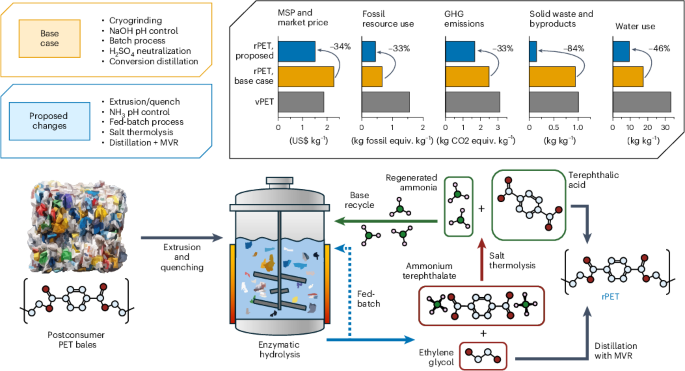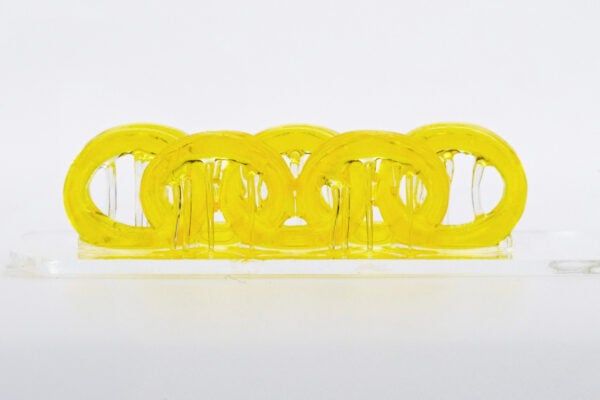2025-06-30 米国国立再生可能エネルギー研究所(NREL)
<関連情報>
- https://www.nrel.gov/news/detail/program/2025/plastics-recycling-with-enzymes-takes-a-leap-forward
- https://www.nature.com/articles/s44286-025-00212-y
- https://tiisys.com/blog/2022/12/22/post-114888/
酵素によるポリエチレンテレフタレートリサイクルを可能にするプロセスイノベーション Process innovations to enable viable enzymatic poly(ethylene terephthalate) recycling
Natasha P. Murphy,Stephen H. Dempsey,Jason S. DesVeaux,Taylor Uekert,Allen C. Chang,Swarnalatha Mailaram,Manar Alherech,Hannah M. Alt,Kelsey J. Ramirez,Brenna Norton-Baker,Elizabeth L. Bell,Christine A. Singer,Andrew R. Pickford,John E. McGeehan,Margaret J. Sobkowicz & Gregg T. Beckham
Nature Chemical Engineering Published06 May 2025
DOI:https://doi.org/10.1038/s44286-025-00212-y

Abstract
Enzymatic depolymerization of poly(ethylene terephthalate) (PET) has received considerable attention for closed-loop polyester recycling. However, current approaches for enzymatic PET recycling face challenges to achieve commercial viability with lower environmental impacts compared with virgin polyester manufacturing. Here we present multiple process innovations for enzymatic PET recycling that enable economic and environmental feasibility. We show that substrate amorphization through extrusion and quenching is energy-efficient and enables near-quantitative enzymatic conversion in 50 h. Using ammonium hydroxide for pH control and thermolysis of the isolated diammonium terephthalate salt reduces the acid and base consumption by >99%, lowering annual operating expenses by 74%. Fed-batch processing increased ethylene glycol concentration, leading to a 65% reduction in energy consumption for ethylene glycol recovery. These improvements were modeled in an optimal process, with recycled PET estimated to be US$1.51 kg−1 relative to US domestic virgin PET at US$1.87 kg−1 and eliminating key life cycle obstacles to scale this technology.




